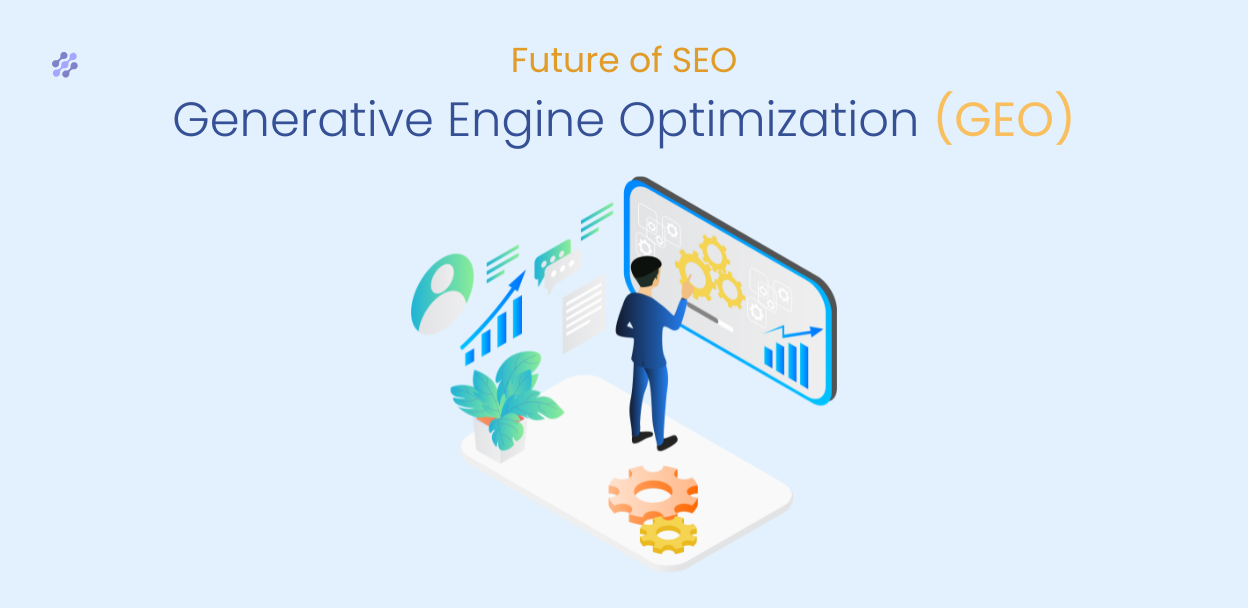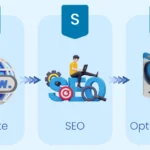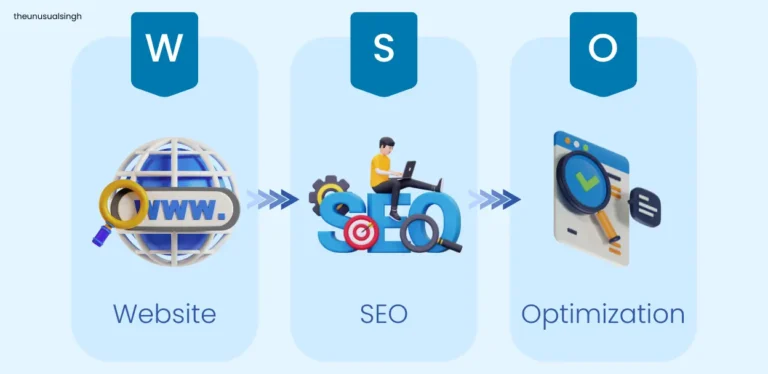- 1 Generative Engine Optimization: What Does It Mean?
- 2 What is the Importance of Generative Engine Optimization?
- 3 Search Engine Optimization and Generative Engine Optimization: Differences and Similarities
- 4 Framework for Generative Engine Optimization
- 5 How Can I Optimize My Generative Engine?
- 6 Significant Obstacles in GEO
- 7 What is the Future of Generative Engine Optimization?
- 8 In conclusion
- 9 FAQs Related to Generative Engine Optimization
In order to stand out from the crowd these days, it’s critical to keep ahead of the curve when it comes to content. Generative Engine Optimization, or GEO, is one of the most recent developments in this area.
To put it simply, GEO aids in content optimization for search engines and AI-based tools.
These engines aid in the production of content, comprehension of user behavior, and provision of tailored content.
Although optimizing content is the goal of both SEO and GEO, GEO is more concerned with making content compatible with AI-driven systems, whilst SEO is more concerned with conventional search engines and human readers.
In order to differentiate your company, it is crucial that you comprehend and apply GEO in your content.
Generative Engine Optimization: What Does It Mean?
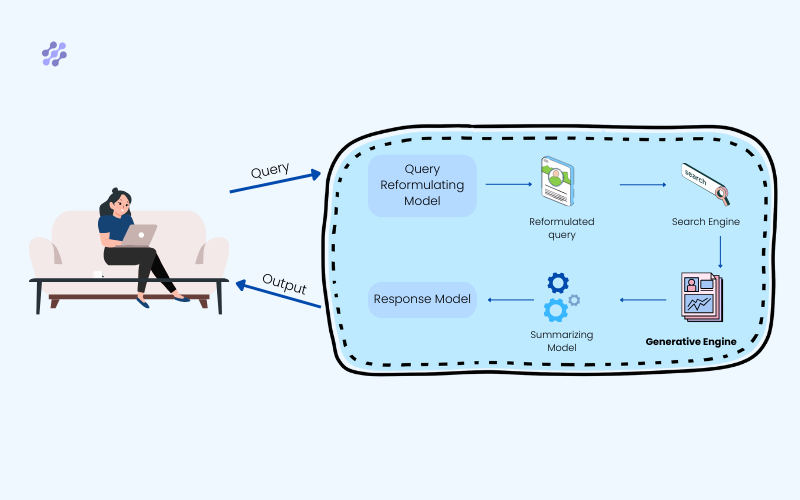
The process of altering your material so that AI-driven systems can understand it is known as generative engine optimization, or GEO. It is a procedure intended to enhance the accuracy, relevance, and user-friendliness of information produced by AI models.
Simply said, it involves altering your AI system so that it produces desirable and superior outcomes when it generates any kind of content, such as text, graphics, etc. To improve clarity, it’s similar to teaching your AI system to better understand individuals and present them with the most relevant stuff.
We no longer only seek for traditional SEO; instead, we now need to incorporate both SEO and GEO techniques into our content. The sole goal of traditional SEO is to optimize content for both search engines and human readers.
GEO, on the other hand, focuses more on altering material to precisely match the way the AI engine produces and operates.
In order to give results based on recurring patterns, the AI engines assess user preferences and intent using sophisticated algorithms on large amounts of data. GEO optimization is a tool that content producers can employ to make sure their work appears in AI-generated results.
What is the Importance of Generative Engine Optimization?
People’s interactions with digital information are evolving along with AI-based technology. Additionally, AI-based tools and AI-driven engines are developing. This indicates that they are able to produce material that precisely matches the user’s requirements.
This significant move from SEO to GEO shows that traditional SEO techniques are insufficient on their own; in order to guarantee that your content performs well, GEO tactics are also necessary. By concentrating on how AI systems perceive and rank material, GEO aids in content performance.
Using generative search engine optimization techniques can increase exposure and interaction for companies and content producers. Additionally, marketers can enhance their online presence and attract a larger audience by matching content with AI-generated outputs.
Search Engine Optimization and Generative Engine Optimization: Differences and Similarities
Due to their commonalities, SEO and GEO both aid in the improvement of web content. But they also differ from one another. Let’s take a closer look.
GEO vs SEO: Differences
In order to rank higher in search results, SEO focuses on making material visible in search engines like Google by utilizing relevant keywords, catchy titles, and links. Human users are specifically targeted by SEO.
But the goal of GEO is to make content easier for ChatGPT and other AI models to interpret. It entails organizing content and writing concisely so AI can produce precise answers. GEO focuses on AI to make sure it can efficiently understand and use content.
Similarities Between GEO and SEO
Constant upgrades are necessary for both SEO and GEO. GEO updates are necessary for changing AI requirements, while SEO updates are necessary for responding to changes in search engines. Aside from that, they both support concentrating on excellent content and comprehending consumer intent.
To put it briefly, GEO makes sure AI can effectively use your content, whereas SEO helps people find it online.
Framework for Generative Engine Optimization
To improve content visibility in AI-driven search engines, the Generative Engine Optimization Framework (GEO) combines generative AI and conventional SEO. The following are some crucial GEO components that transform your ordinary content into rich content:
- AI Algorithms: To evaluate and produce content, AI engines employ algorithms. By modifying your content tactics, these algorithms aid in content optimization.
- Production of Data-Driven Content: GEO is all about leveraging data to direct the production of content. Content producers can create content that better engages AI engines by observing user behavior, preferences, and trends. In this manner, the content remains pertinent and meets the target audience’s needs.
- Personalization: AI systems excel at providing consumers with content that seems unique to them. Developing easily customizable content is essential for GEO success. This could entail responding to particular user inquiries, utilizing dynamic components, or customizing content for certain audience segments.
- Relevance and Quality: GEO prioritizes relevant and high-quality material, just like traditional SEO does. AI systems favor well-written, educational information that is relevant to user searches. The secret to GEO’s success is ensuring that your material satisfies these requirements.
How Can I Optimize My Generative Engine?
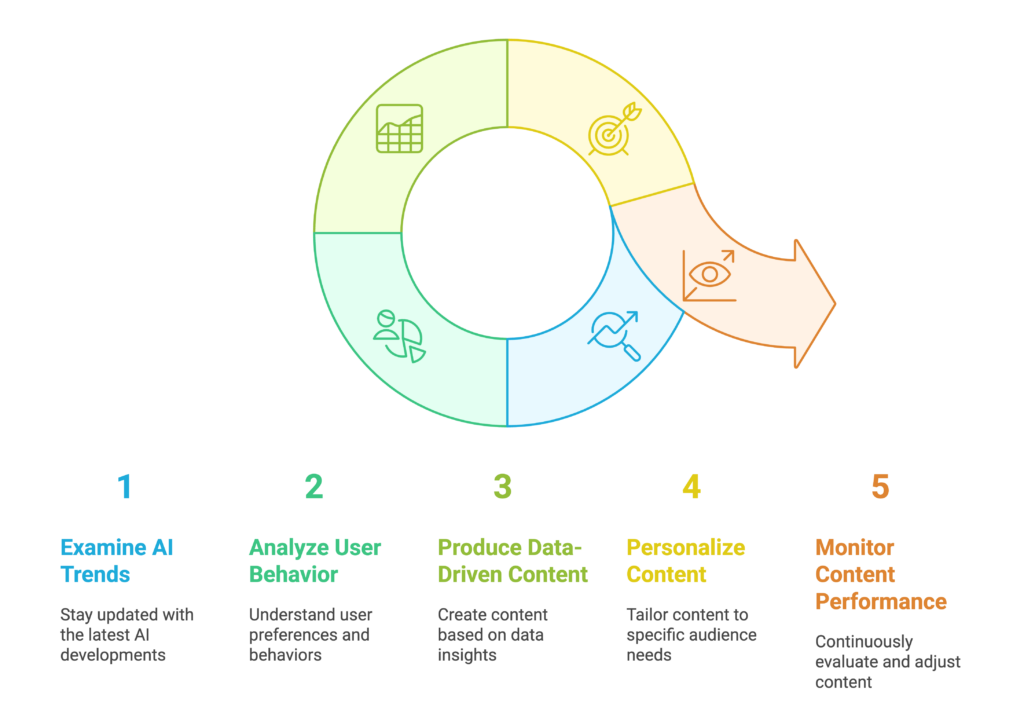
It’s not necessary to be an expert to use GEO in your content. All you have to do is take the actions listed below. Read on for more details:
- Examine Trends in AI-Based Research: Discover the newest developments in generative engines and AI technology. Recognize the content that these systems prioritize and how they operate.
- Examine User Conduct: Utilize tools to examine user behavior and preferences. You can utilize this information to produce content that meets the needs of your users.
- Produce Data-Driven Content: Make data-supported content based on your research. To satisfy the demands and preferences of your target audience, concentrate on creating excellent content.
- Personalize: Give the content a unique touch. By answering user inquiries and tailoring your content to suit various audience segments, you may do this.
- Keep an eye on your content at all times: Maintain a careful eye on your material to monitor its performance and make the relevant changes as needed to satisfy AI engine needs.
Suggested Read: What is Website SEO Optimization (WSO)?
Significant Obstacles in GEO
Although GEO has numerous advantages, there are drawbacks as well. The following are some considerations:
- Technology That Is Always Changing: Because AI technology is constantly evolving, your GEO tactics must also be adaptable. Long-term success depends on keeping abreast of the most recent advancements in AI and modifying your strategy accordingly.
- Privacy of Data: It’s critical to be mindful of privacy concerns because GEO depends so much on data. Make that your procedures for gathering and using data respect user privacy and adhere to applicable laws.
- Maintaining customisation: Although GEO emphasizes customisation, it’s also critical to make sure that your content remains applicable to a larger audience. Effective GEO requires striking the correct balance between relevance and personalization, which can be challenging.
What is the Future of Generative Engine Optimization?
GEO’s significance will only increase as AI advances. We may anticipate that generative AI search engine optimization will continue to advance in providing users with highly relevant and tailored content. This implies that in order to stay ahead, companies and content producers will need to continuously adapt their approaches.
With the development of AI technology, generative engine optimization appears to have a bright future. As more sectors use AI to create content, GEO will be essential in ensuring that the resulting material is not just excellent but also produced ethically and in accordance with human values.
Better methods for comprehending context, user preferences, likes and dislikes, and other factors should help GEO advance, resulting in more interesting and tailored AI-generated content.
Furthermore, GEO will probably concentrate on enhancing transparency and equity in content creation as worries about bias and false information in AI increase, making sure that AI systems generate diverse and reliable content. GEO will play a significant role in the future of digital communication and content because of this continuous evolution.
In an increasingly AI-driven world, you can ensure that your content remains competitive by staying current and implementing GEO practices. GEO supports your digital strategy, whether you’re a company looking to increase your online visibility or a content producer hoping to reach a wider audience.
In conclusion
Generative Engine Optimization, to put it briefly, is a recent development in digital marketing and content production. Thus, by putting GEO principles into practice, one can make sure that the material is appropriate for AI-based search engines, has the greatest possible reach, and interacts with the appropriate target audience.
Additionally, as AI develops further, it will be essential to remain knowledgeable and flexible enough to produce desired yet useful outcomes.
GEO is a content-based approach that assists in providing generative AI platforms with content. It allows you to create material that is relevant, high-quality, simple to understand, and AI-systems can access.
GEO and SEO differ primarily in how they approach content creation and optimization. On the one hand, SEO uses conventional methods such as supporting backlinks and adding keywords. GEO, on the other hand, employs AI to produce tailored content that fits user behavior.
Since search engines like Google, Bing, and others continue to display pages and results using traditional SERPs (search engine results pages), GEO cannot yet fully replace SEO.
